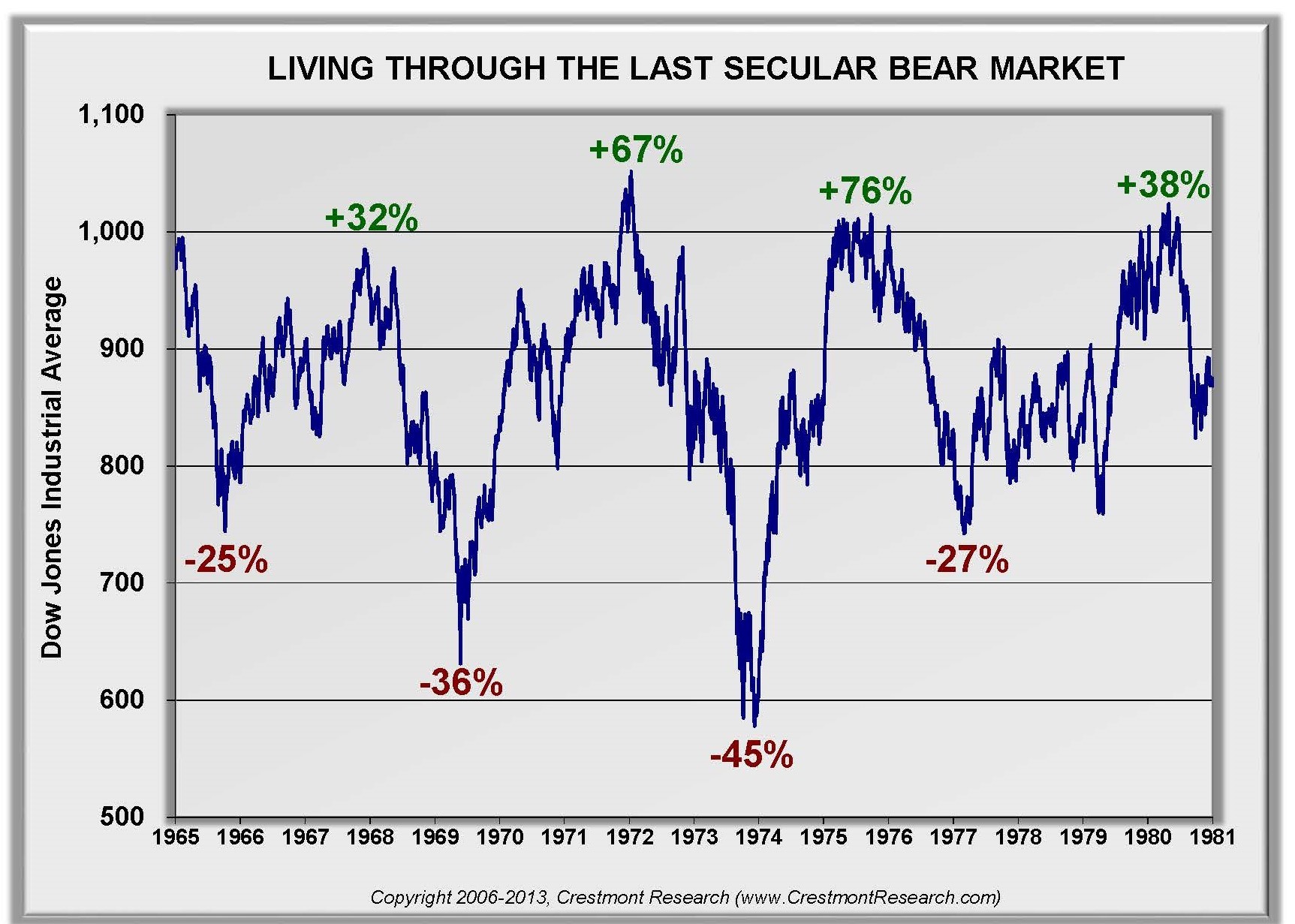April 2019
By: Pat Guinet, CIMA®
The market does not always go up. There have been periods in its history when the long term trend has been volatile and sideways. From 1966 to 1982 the Dow Jones Industrial Average (DJIA) lost approximately 10% of its value. What would happen if the market were to enter a similar period shortly before you retire or while you are retired? Are your existing investment strategy and asset allocation adaptable to this type of environment? No one truly knows what will happen, but at GFP we are making sure we consider the possibility and its impact on each client’s unique retirement. We are first and foremost your fiduciary. We believe educating you and understanding history can be helpful to our relationship and our commitment to your long term financial needs. We begin our 4 part series with two graphs depicting the 1966 to 1982 secular (long term) bear market from www.crestmontresearch.com.

The above graph depicts multiple rallies and declines from 1966 to 1982. A very different experience for investors than the cliché’ comment from many advisors of “The market always goes up over time.”
When we add time frames to the above graph, we are further educated.

This period was very different than the period of 1982 to the present when bear markets were great buying opportunities for investors. A safe strategy was to buy on the “dips” and expect the market to simply make a new high.
Could we see a market similar to 1966 to 1982 secular bear in our future? As they say, history doesn’t always repeat though it does rhyme. Given the high valuations in the current stock market, and its similarity to the high valuations in 1966, investors will need to change their approach towards investing from simply buying the market to a strategy requiring a more active than passive approach to the management of assets. We are very concerned by the current message of lower expense ratios, and index like investments being the popular choice for investors. We may be entering a period when sound, active advice, with a tactical overlay will become necessary to generate sufficient returns to support the unique goals of each investor’s retirement plan.
In our May The Guardian Standard Newsletter, we will continue our series on investing and the stock market. Future articles will discuss the secular (long term) trend of US interest rates, the Nikkei 225: 1987 to the present, and finally how GFP’s DRAAMS investment management platform can offer a solution for the active management of your assets.